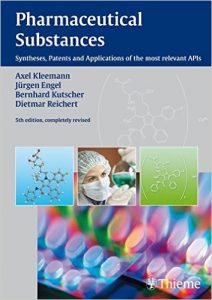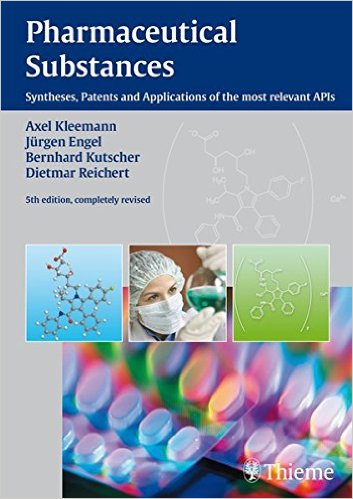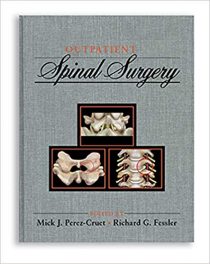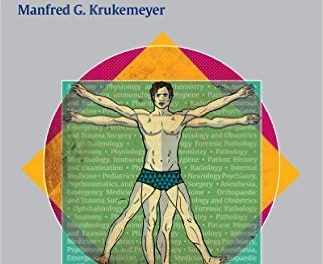 Authors: Dr. Axel Kleeman, Dr. Jurgen Engel, Dr. Bernhard Kutscher, and Dr. Dietmar Reichert
Authors: Dr. Axel Kleeman, Dr. Jurgen Engel, Dr. Bernhard Kutscher, and Dr. Dietmar Reichert
Publisher: Thieme – 1,722 pages
Book Review by: Nano Khilnani
This book has been developed for use by a wide range of entities and individuals, including but by no means limited to: companies in drug synthesis and manufacturing, user groups in the chemical, intermediaries, and pharmaceutical industries, pharmacists, research institutes, universities, and many others.
About 1,300 active pharmaceutical ingredients (API), commonly referred to as pharmaceutical substances (including the syntheses of the corresponding intermediates) are the subject of this fifth edition of this reference work that was published in 2009, updating the information found in the fourth edition that had come out in 2001.
The production and isolation processes of these substances are described in this volume. To see what information you can find on the pharmaceutical substances covered in this large book, an excerpt of a typical monograph (a sample entry) is shown on pages VIII and IX. The descriptive content has been shortened for demonstration purposes, but you can view the larger version of this entry, and much other information, on this website: www.thieme-chemistry.com.
The abbreviations used frequently, of substances, are found on the inside front and back covers of this book. The names of reagents and intermediates the authors have used are found in the catalogues of commercial providers of the substances, as for example, Sigma-Aldrich. In some instances, the Chemical Abstracts Names are given.
Several standard reference books for Pharmaceuticals and Fine Chemicals were used and cited, in addition to the respective patents and published work in journals. For example, these sources were used: The Merck Index, 14th edition, Merck & Co. Inc. NJ 2006; Index Nominum18/19th edition medpharm GmbH, Stuttgart 2204/2008; D.Lednicer, The Organic Chemistry of Drug Syntheses, vols. 1-7, 2007-2008, Wiley Interscience, New York.
With respect to acute toxicity, the authors state that data were in most cases taken from different data banks or other secondary sources, so no guarantee can be given for validity.
Here are some new items of information in this fifth edition that were not part of the fourth edition in 2001:
- Many new chemical entities (NCEs)
- New names of companies that changed ownership as old companies disappeared
- 165 new monograph entries
- Medical use information has been harmonized wherever possible
- Focus on the most important drugs in terms of volume and sales, excluding biopharmaceuticals
Here is how the material is organized in this volume:
- Alphabetical list of abbreviations used in this book are found on its front and back covers
- Title and authors page
- Publisher’s page and registry information
- Table of Contents
- Preface
- Introduction
- Sample entry of a pharmaceutical substance
- Alphabetical list of drug monographs: acamprosate 6 to zymofren, pages X to XXXI
- Alphabetical list of pharmaceutical substances: abacavir to zotepine, page 1 to 1508
- Trade names: A 313 to Zyvox, page 1509 to 1544
- Intermediates: acetaldehyde to zopiclone, page 1545 to 1695
- Enzymes, microorganisms, plants, animal tissue, page 1697 to 1699
- Substance classes, page 1701 to 1722
This is an essential resource for professionals working with pharmaceuticals.
Authors:
Prof. Dr. Axel Kleeman
Amselstr 2
63454 Hanau – Hohe Tanne
Germany
Prof. Dr. Jurgen Engel
President and CEO
AEterna Zentair GmbH
Weismullerstr.50
60314 Frankfurt
Germany
Prof. Dr. Bernhard Kutscher
VP Research and Development
Baxter Deutschland GmbH
Im Breitspiel 13-17
69126 Heidelberg
Germany
Prof. Dr. Dietmar Reichert
Evonik Degussa GmbH
Rodenbacher Chausee 4
63457 Hanau
Germany







